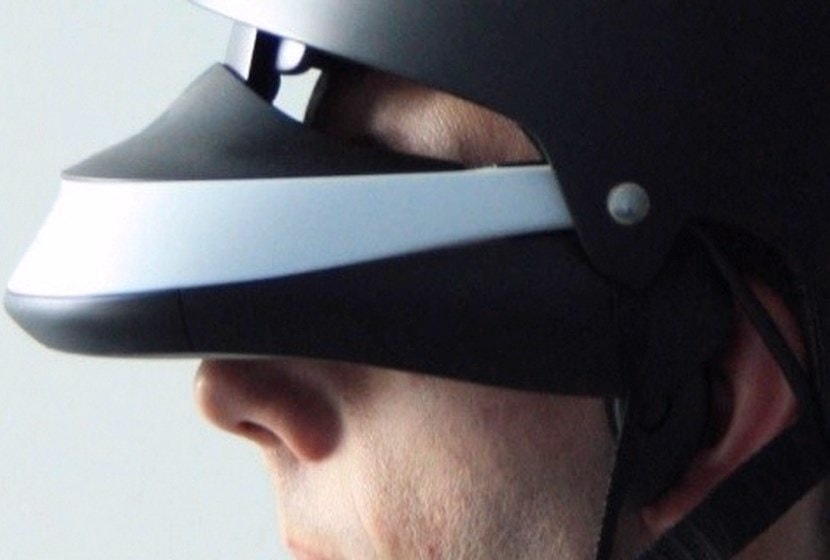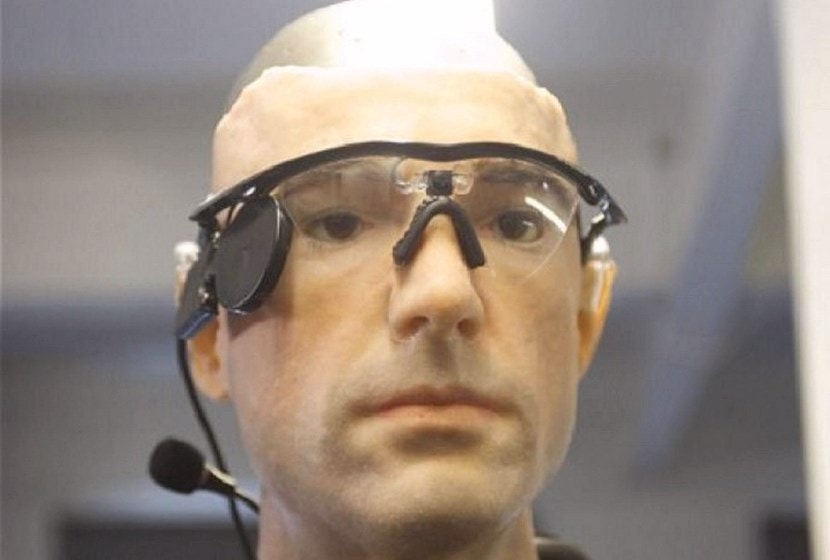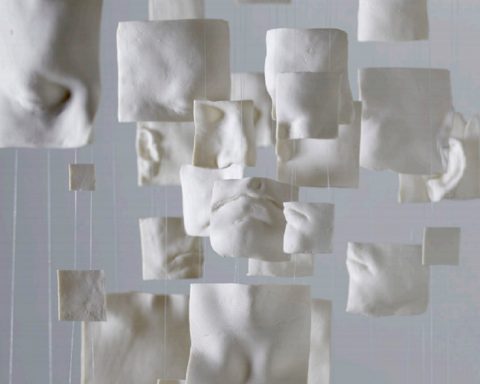Researchers from INSA Rennes, INRIA and the University of Rennes 1 have just filed a patent for a new visualization technology enabling 360° vision in real time.
It is a visiocasque topped by a panoramic camera that broadcasts a 360° view in real time. The person wearing this helmet is immersed in an immersive view where he perceives everything around him and can move, even backwards.
Photo © Ardouin/ INRIA/ INSA/ ESIEA/ Université Rennes 1
FlyViz is the result of a two-year collaboration between several researchers: Anatole Lécuyer (Research Director at Inria), Jérôme Ardouin (Lecturer at ESIEA and PhD student at INSA/Inria), Maud Marchal (Senior Lecturer at INSA Rennes), and Eric Marchand (Professor at the University of Rennes 1).
An ambitious project
The ambition of the FlyViz project is to improve man's natural field of vision by allowing him to have a 360° vision. In order to design this avant-garde system, the research teams managed to combine for the first time several advanced technologies in the field of visualization. The helmet is equipped with a camera capable of filming in all directions that captures an image containing a multitude of views. This image is then analyzed and processed in a snapshot and projected into a visiocasket, to display a panoramic image of the entire user's environment in real time.
A revolutionary technology
For Anatole Anatole Lécuyer, Inria Research Director "FlyVIZ is a great research tool to study human perception and brain adaptation. Indeed, initial trials have shown that most users get used to 360° vision within the first 15 minutes of practice, managing to move around in their new environment.
"FlyViz is also a device with a very playful potential that can allow everyone to live a truly unique sensory experience! » In the medium term, multiple applications using FlyViz technology can be envisaged. Indeed, the concept could be developed in security-related professions or in emergency situations, for example, to enable soldiers, policemen or firefighters to avoid potential dangers or to locate hazards more quickly.
 How does it work?
How does it work?
Specifically, the user wears a conventional safety helmet on which a panoramic camera is mounted. He or she is wearing a helmet with a panoramic camera in front of his or her eyes. head mounted display (head-up display helmet) which sends back a 360° image to him. Beforehand, this was "unfolded" by software via a laptop PC that he carries in a backpack. The camera used is a CCD model of the German brand Imaging Development SystemsIt has a resolution of 640 x 480 pixels and is equipped with a 6 mm lens. It is pointed at a hyperbolic mirror at the top of the device. The captured image is distorted and this is where software processing is used to unfold it so that it can be displayed in a panoramic view in the headset in a 45° field of view with a 16:9 ratio.
Unfold the image with FlyViz
To do this, the researchers used a projection technique known as "flat square" (or equirectangular) projection, which, among other things, allows them to obtain a flat map of the globe. To this technique, the researchers associated a second algorithm that takes into account the calibration of the panoramic camera by modeling its lens as well as the hyperbolic mirror. The calculations are performed by a laptop computer that the user carries in a backpack and is connected to the camera by USB cable. "These two projections have been implemented to run directly on current graphics processors (standard computer graphics cards), which guarantees very good performance and therefore compatibility with real-time use," the researchers explain.
Tests were conducted with a notebook PC with an Intel Core i7 processor running at 2.3 GHz combined with a Quadro 2000M graphics processor and a netbook with an Atom processor running at 1.8 GHz with an Ion 2 graphics chip. With the first configuration, the frame rate is 480 Hz, and 24 Hz with the second. The latency rate between image acquisition and display in the headset is 83 milliseconds, allowing real-time operation.
As Anatole Lécuyer, research director at Inria, explains, "FlyViz is a great research tool for studying human perception and brain adaptation. We are therefore also currently thinking about applications, particularly in the field of entertainment. »
One can indeed imagine the potential of such equipment for augmented reality in the context of a video game. (Source: INRIA, INSA - Dec 2012)
{Jacuzzi on}












